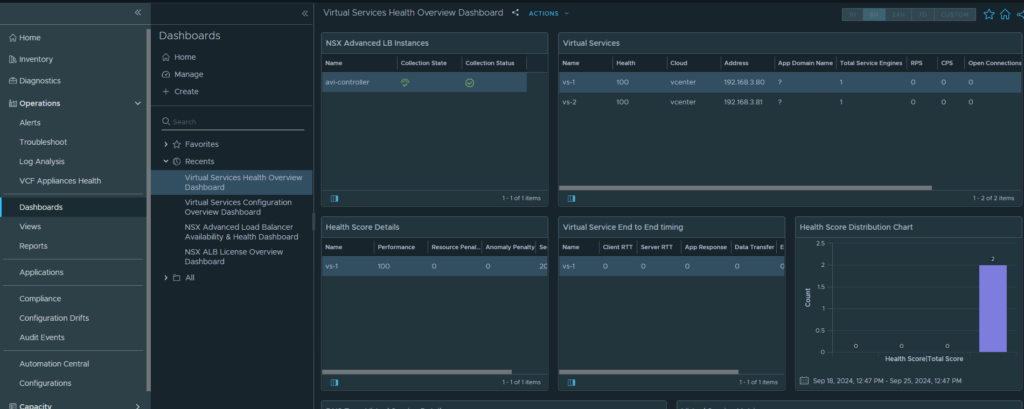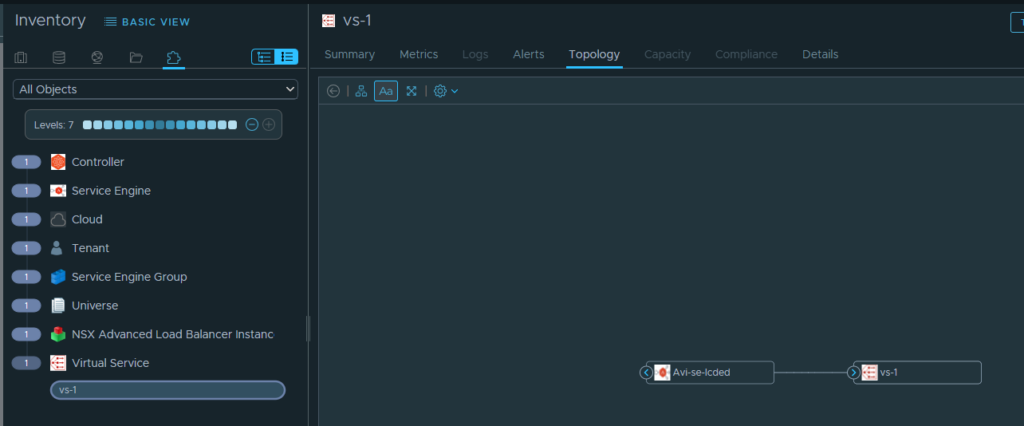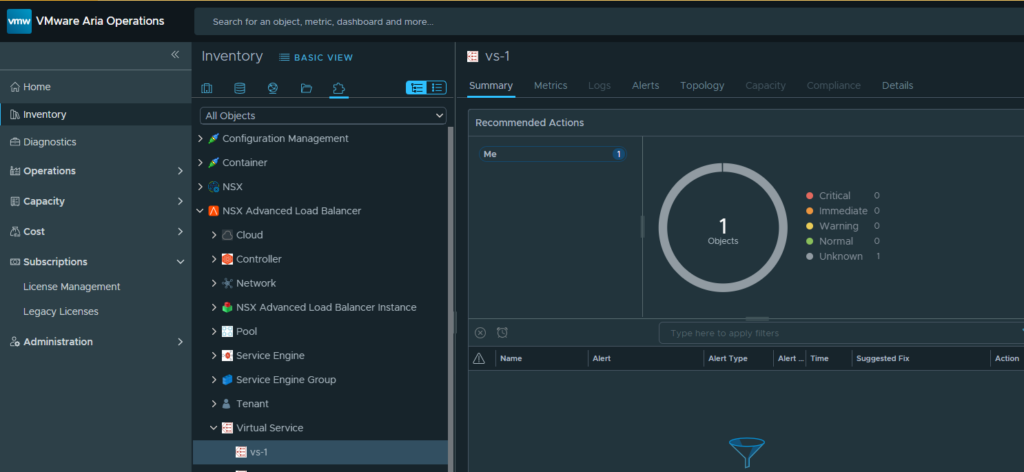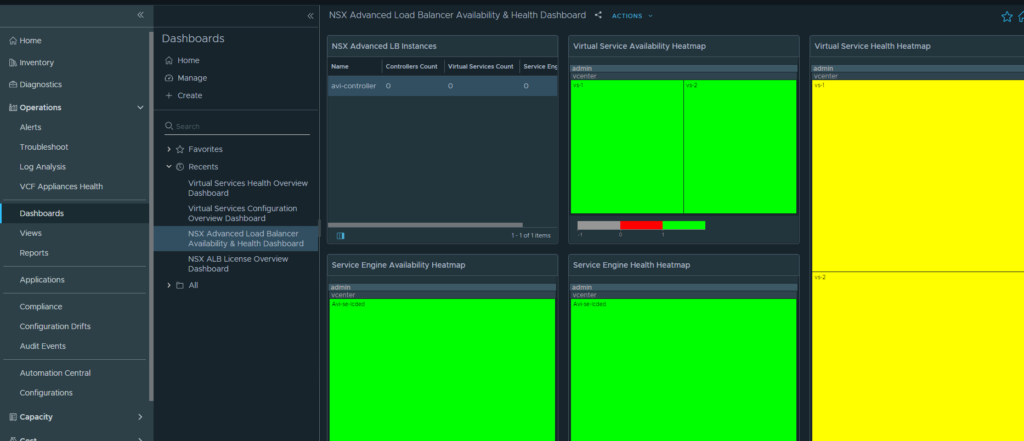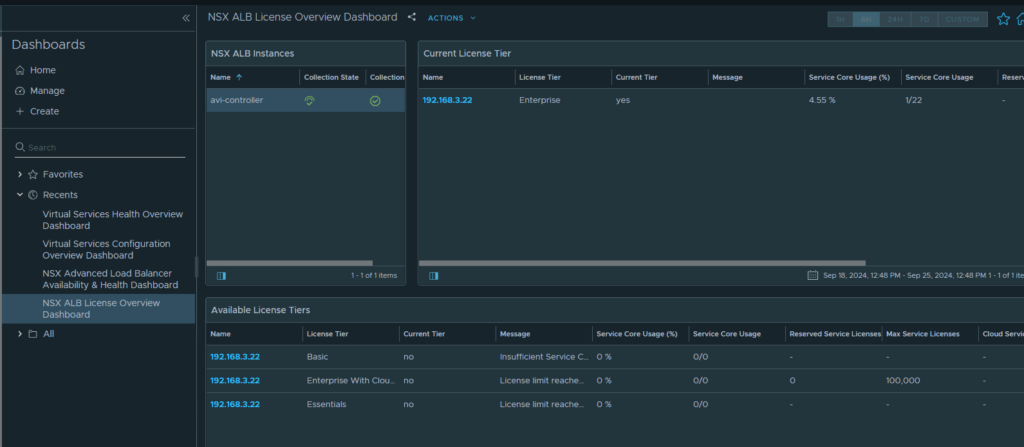Of all the VMware tools that I’ve used, and written blogs about, I’ve not done much with Aria yet. So for today’s blog, I’ll cover the Avi plugin inside of VCF Operations. VCF Operations has also been known as Aria Operations, and vRealize Operations. In the version I’m using below, it will show as VMware Aria Operations.
VCF Operations is a tool that lets you view the health of your entire VCF estate, in a single application. It has a number of native integrations with various VCF components such as: VCF itself, vCenter, vSAN, NSX, and others. Each of these components have a tile in VCF Ops, and selecting a tile will allow you to configure the integration into those components.

It has a ton of features and to be honest, I have just scratched the surface with this integration. For the Avi load balancer, you will need to download something called a Management Pack, and upload it to the VCF Operations tool. Once you’ve uploaded the PAK file, then you can configure Avi. The Management pack for Avi is actually called NSX Advanced Load Balancer, in the versions i’m using as shown below.
Software Versions used in this demo
| Software | Version |
|---|---|
| VCF Operations | 8.18.1 |
| VMware Avi Load Balancer | 30.2.2 |
| VMware Aria Operations Management Pack for NSX Advanced Load Balancer | 1.3 |
Avi Setup
We will be connecting Avi to VCF Operations in this lab. So for the Avi setup piece, you will need to deploy an Avi controller, and ideally create a VirtualService and some service engines.
Specifications
- Avi Controller
- 6 CPU
- 32 GB Mem
- 128 GB Disk
- Avi SE
- Single Avi SE
- 1 CPU & 2 GB Mem
- Virtual Services
- 2 L7 VS
See this guide if you need some assistance setting up the Avi controller.
VCF Operations Setup
VCF Operations can be deployed as an OVA, and it can run as a single node. In my lab I’ve configured 4CPU and 16GB as the system requirements.
Download VCF Operations
Navigate to the broadcom portal, and download VCF Operations

The name as shown in the Broadcom portal is VMware Aria Operations

As of the writing of the blog, the latest release was 8.18.1

VMware Aria Operations – Appliance installation. This file is an ova file, and it’s what you need to deploy the VM in vCenter.
Deploy the VCF Ops VM
In this step, we’ll take the downloaded ova file, and deploy the VM.

Select the VM file from your downloads: vRealize-Operations-Manager-Appliance-8.18.1.24267784.ova

Set the name and folder for the VM.

Select the cluster in which to deploy the VM.

Review the summary and on the next page agree to the license.

Select the size for your appliance. I chose small, it seems to work just fine in my lab.

Select your storage. vsanDatastore.

Select your management network.



I set the properties as shown above. I chose static for the ipv4 address because I wanted to set the fqdn. But change the settings as you see fit.

Review the settings and click Finish to deploy the VM.
Initial Configuration of VCF Operations
After the VM starts, you will eventually be able to access the UI via your IP address or FQDN: https://aria-ops.home.lab
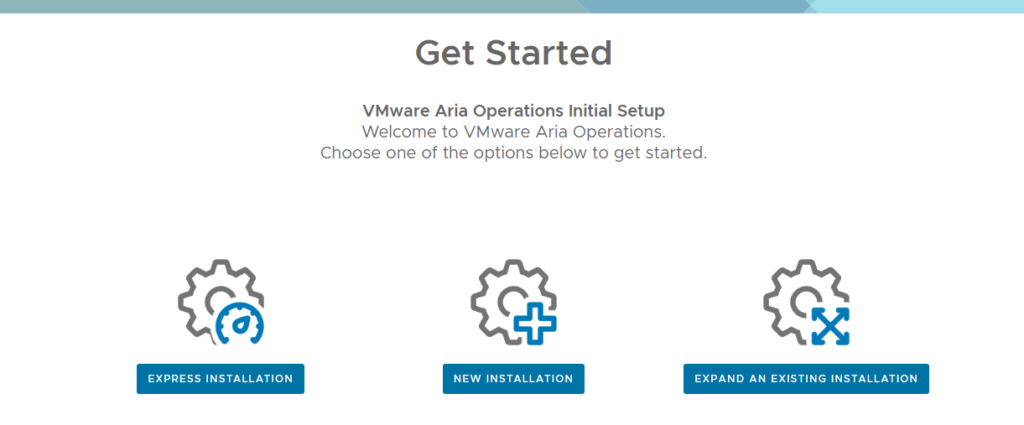
The welcome screen is shown above, click New Install.
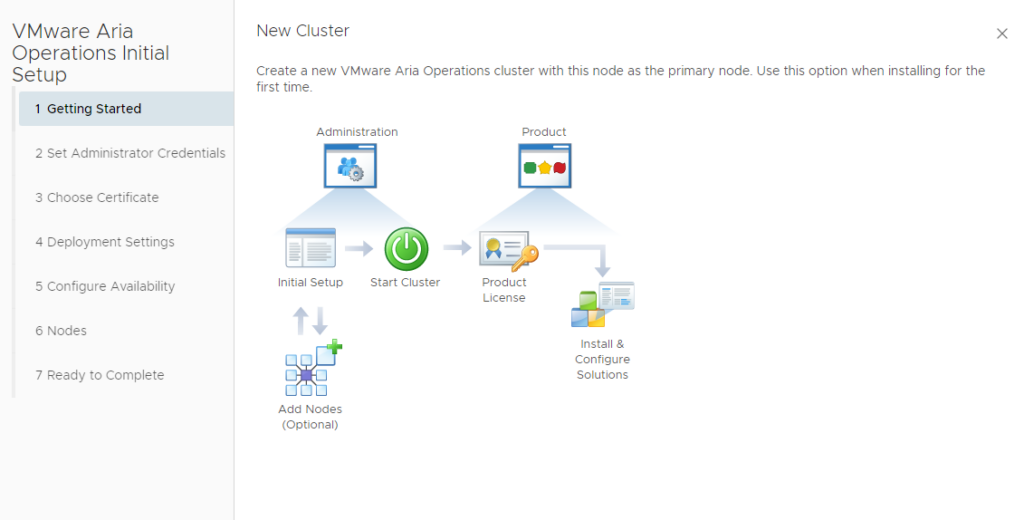
We’re going to create a single node VMware Aria Operations cluster. I know it talks about primary nodes and additional nodes, but the extra nodes are optional and not required.

Set the administrator credentials.

I am using the default certificate, but you can change yours as needed.

Set your VM name, aria-ops. And also the ntp server, pool.ntp.org.

I left the above default and did not configure any Availability Mode.

Same with the Nodes. I left this blank, and clicked Next.

Just a review screen, click Finish.
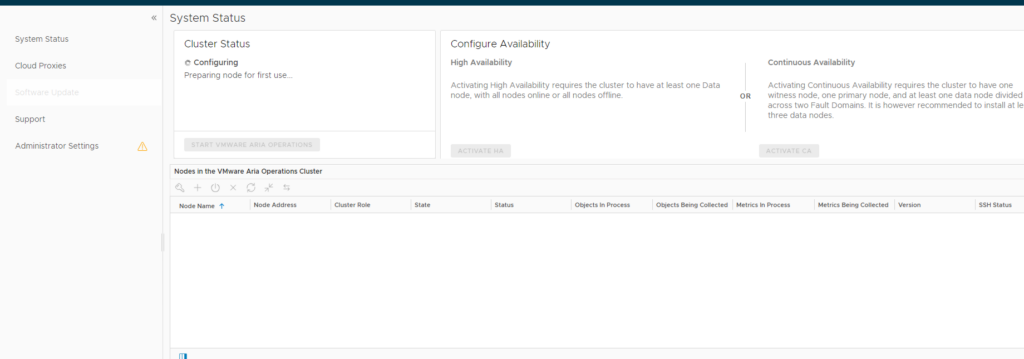
Preparing the node for first use. This takes about a minute or two.

Click Start VMware Aria Operations and accept the popup warning. At this point the VCF Ops cluster will start to form. All the required services will be spun up and eventually be ready.

Tracking the status…


and finally…
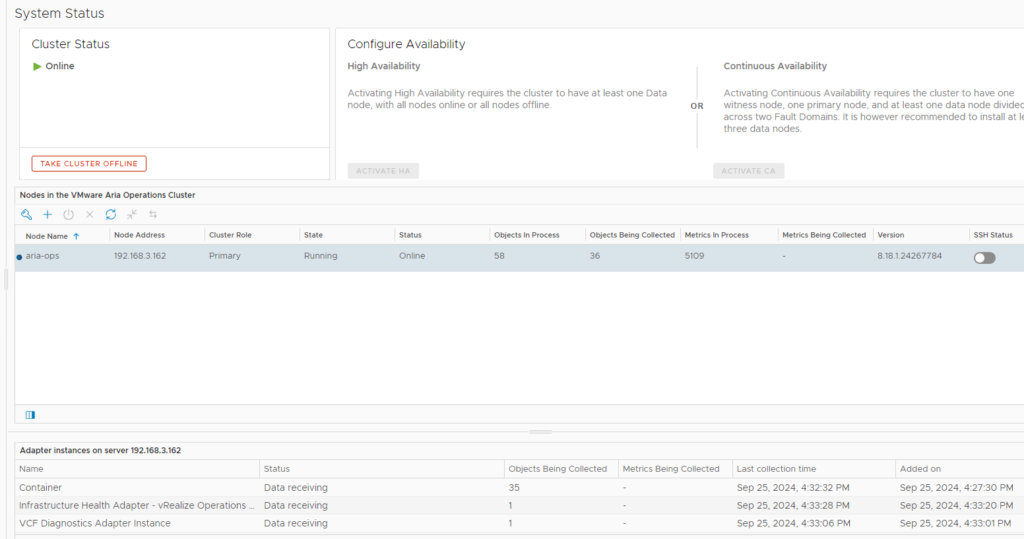
Ok so as you can see the cluster is up and running, it took about 10 minutes in my lab environment.
The next step is to access the UI again, via IP address or FQDN: https://aria-ops.home.lab.

It should look something like the above.

Some additional configuration. Click Next. On the following page, accept the EULA.

Enter your product key, or select Product Evaluation. I have not tested with Product evaluation.
Move through the CEIP page and finally click Finish.

VCF Operations is all setup now.
Avi Management Pack in VCF Operations
So now we have Avi up and running, and we have VCF Operations up and running. In this last step we will download the Avi management pack and connect VCF Operations to Avi.
Download the Avi management pack

Navigate to the VMware Marketplace and download the product called: vRealize Operations Management Pack for NSX Advanced Load Balancer
The filename was: vmware-mpfornsxadvancedlb-1.3-24037466.pak
Install the Management Pack
After downloading the .pak file, we need to install the pak into VCF Operations.
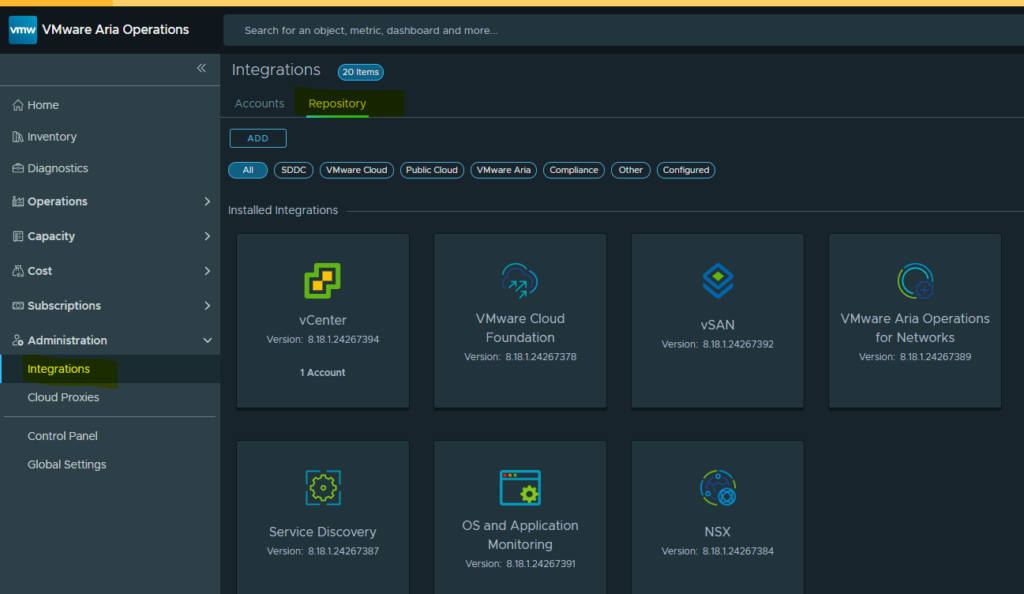
Navigate to Administration -> Integrations. And click on Repository. Then click Add.

Select the PAK file and click Upload.

I’ve found this next part a bit finicky. It seems to freeze at 100% for a while. And sometimes you’ll get an error “Upload Failed”

If you get the error shown above, just keep trying it. It seems to eventually work. I’m sure there is something useful in the logs that I didn’t see.
After 3 tries…..

Accept the EULA, and click Next. It will then start installing.


And finally you can see the newly created NSX Advanced Load Balancer Tile.
Integrate Avi and VCF Operations
In this last step we will set some basic configuration in the Avi tile, and VCF Operations will then start gathering objects and data from Avi.

Navigate to Administration -> Integrations. and under Accounts, click Add.
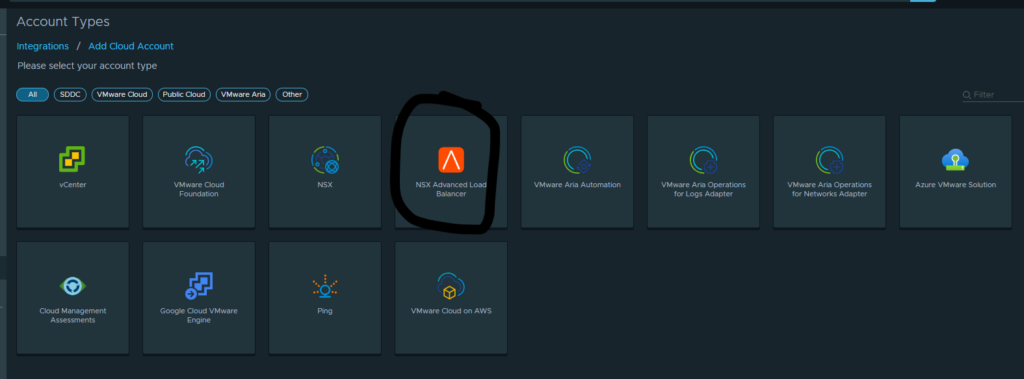
Select the NSX Advanced Load Balancer tile.

Set the name of the integration and the Controller URL. This is a full URL including the https://.
I missed that part at first and wasted an hour looking through the logs. You will need to create some credentials, a visual of that shown below.

Click Validate Connection…

Accept the thumbprint.

Connection successful. And lastly click Add.

Now you can see the Avi Controller configured in VCF Operations.
Avi Dashboard in VCF Operations
Now that the integration is complete, you can start to view some of the Avi objects in VCF Operations. I’ve played with this integration for maybe 10 minutes total, so I don’t really know what all is available, nor do I have much running in my Avi controller. So the true benefits are yet to be discovered on my end, I mostly wanted to illustrate the installation of the Avi plugin for VCF Operations.
Here’s a few screenshots from the VCF Ops Dashboard.
